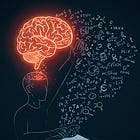learning styles: a seductive but utterly useless idea
Fuggetaboutit, they don't exist
‘Learning styles’ is simple in theory, possibly even flattering to the learner, and utterly ridiculous in practice (when you think about it carefully).
The theory: if we somehow match teaching to a learner’s preferred modality (typically labelled ‘visual, auditory, reading/writing, or kinaesthetic’, sometimes shortened to VARK), learning will improve (somehow).
This is a big claim. Imagine being confronted with a task to learn: a written script (verbal learning), or the piano (visuomotor learning), or navigating a complex work situation with competing demands (social learning), or learning a song (auditory); or the new complex ticket machine at your train station (visual, auditory, kinaesthetic); or learning to drive a car, a bike or a computer game (visual, auditory, reading, kinaesthetic).
Transform the task somehow to your preferred learning style, and voilà, you’ll learn more quickly, efficiently, and retain the material for longer, and presumably be able to use it more effectively.
On the contrary, if you ignore your preferred learning style, then you’ll learn more slowly and less effectively.
Seductive idea, isn't it? (First question: how do you know your preferred learning style? Do you really know it? On reflection, do you have a preferred style for learning how to swing a racket, a golf club, or to learn a new complex coding procedure? Course you don’t.)
Learning styles theory is not just a claim about some preference you have (like a preference for salty over sweet foods); it is a serious claim about the mechanisms of learning and memory, as well as a set of predictions about the learning and memory systems of the brains of learners.
However, pursuing learning styles as a theory of learning and memory has been one of the deadest of dead ends: a pointless, nonsensical, take on learning and memory, a view of learning discussed solely within a group of aficionados who have been having silly and pointless conversations with themselves for decades, even though the idea has failed every empirical test, and makes no contact with actual studies of learning and memory, at any level, from synapses to brain systems to collective memory.
And it is a daft idea if you step back and consider the anatomy and evolved cognitive functions of the brain in any detail at all:
In experimental terms, learning styles proponents assert an aptitude–treatment interaction (ATI): a person × treatment effect in which people assigned to their preferred ‘style’ will learn more from instruction delivered in that style, and will learn less when paired to a mismatched style.
That decisive crossover pattern has not materialised - for it does not exist. Instead, we have an intuitively-appealing story floating free of neurocognitive theory, resting on little-to-no or weak measurement, and which resists being killed off when critical tests show it is wrong (because the committed want to believe in it!).
My book ‘Talking Heads’ (US Kindle Ed available here) has an extensive discussion of shared reality, memory, and collective remembering. No learning styles here.
The prevalence of belief in learning styles among educators remains strikingly and stupidly high, possibly explaining the persistence of the learning style neuromyth despite null findings.
The effective alternatives (retrieval practice, spacing and interleaving)are rooted in well-replicated cognitive mechanisms that generalise across learners.
Finally, contemporary neuroscience shows memory depends on distributed, interacting cortical–temporal–diencephalic circuits, and not isolated ‘visual’ or ‘auditory’ modules, undermining the biological plausibility of fixed sensory ‘styles.’
If you enjoyed this post, and want more essays on how neuroscience and psychology can help us build better lives, subscribe below. You’ll get new ideas from BrainPizza.
the seduction of personalisation
Learning styles continue as a conjecture about learning because they take some very weak claims, which are then taken to a stronger set of mistaken conclusions.
It is true that disciplines traffic in different representational media, from maps and diagrams in geography, to equations and graphs in physics, to timelines and narratives in history. And multi-modal materials for instruction may help learners.
From these premises, a stronger claim is made: that the durable part of learning improves when instruction is matched to a person’s stable modality preference.
The rhetoric is that of personalisation, but the reality is a label applied to people rather than an analysis of the tasks they face.
A credible theory of learning makes contact with mechanisms and boundary conditions. It specifies what is changing in the learner (encoding, storage, retrieval); it says when a predicted effect should appear and when it should not.
Learning styles accounts offer none of this. ‘Preference’ is treated as a cause; ‘matching’ is treated as a cure, leaving us to imagine a ‘visual learner’ who ought to learn better from pictures and an ‘auditory learner’ learning geometry by talk rather than diagrams (as if they don’t have a visual system!).
This is not a theory; this is ‘not even wrong’.
a test the idea cannot pass
The only fair test are experiments that:
(i) classify learners with a stable, valid measure;
(ii) randomly assign them to matched or mismatched treatments;
and (iii) evaluate outcomes that matter (delayed retention and transfer), while estimating the crossover interaction directly.
(BTL: what modern cognitive science actually says; neuroscience says not to styles; harms and opportunity costs; why the myth persists; from labels to learning architecture; policy and practice: what to stop, what to start; the bottom line; annotated bibliography, with brief notes on methods and relevance)
Keep reading with a 7-day free trial
Subscribe to Shane O'Mara to keep reading this post and get 7 days of free access to the full post archives.






